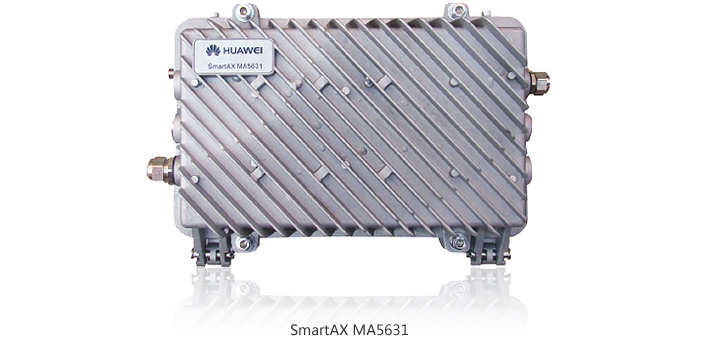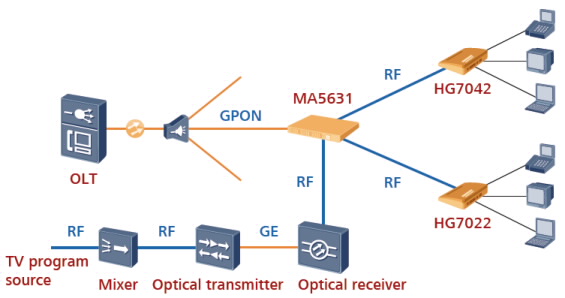SmartAX MA5631
El SmartAX MA5631 (MA5631 de forma abreviada) es un producto de cabecera Ethernet sobre Cable Coaxial (EoC) lanzado por Huawei. Se utiliza en soluciones de Red Óptica Pasiva (PON) y de reestructuración de redes bidireccionales EoC (es decir, una apertura recíproca entre las industrias de telecomunicaciones y radiodifusión). El MA5631 utiliza la tecnología dominante de modulación de baja frecuencia HomePlug AV. Con la integración de las funciones de la unidad de red óptica (ONU), la cabecera EoC y el mezclador, el MA5631 proporciona dos puertos uplink GPON o GE y es compatible con un ancho de banda de 300 Mbits/s para un solo canal. Al proporcionar una vía de transmisión bidireccional para servicios de radiodifusión y televisión, el MA5631 aumenta el ancho de banda de acceso a esos servicios y proporciona acceso de calidad a Internet, servicios de voz, IPTV, VoIP y monitoreo por video, cumpliendo con los requisitos de los operadores para la implementación de múltiples servicios.


